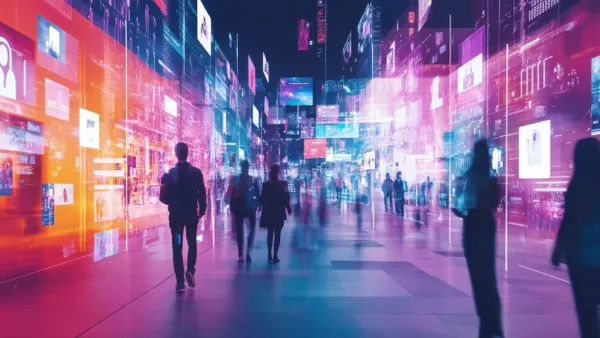Last week, a rumor emerged that has sent retail pundits aflutter with delight and speculation. Google: search giant, arbiter of the Android operating system, and seemingly omnipotent part of the digital world, might be entering the retail space in America. With its hand in dozens of industries—from energy to fitness, and mobile phones to historical book preservation—Google is running out of digital kingdoms to conquer. The only solution is to enter the physical world with a brick-and-mortar store.
Google has already experimented with retail in other countries. Most notably Androidland, a series of stores throughout South Asia and Australia that are operated by carriers but heavily branded with the Android mascot and its garish green color scheme. With this though, it seemed like Androidland was more about platform recognition and experiential product exploration than product movement.
Although Google created and maintains Android, Androidland was not about Google. It was about carriers and third party partners showing off products that happened to carry Google software. Google’s retail ambitions in the U.S. are far more important. This will not be an Androidland. This will be a Google store through and through.
What a Google brand would look like
In the past two years, Google has made significant changes to its branding, placing greater emphasis on the company as a household name. Google has begun to develop a company-wide design language and style: There’s a typography, color scheme, and cohesive look to all of Google’s products that was lacking for years. Just like an average person can differentiate an Apple product from a Microsoft device, consumers will be able to identify Google’s unique homegrown products from its competitors.
Empowered by this new visual identity, Google is fighting back against third party OEMs that skin its Android mobile software into an unrecognizable form. The company has scored key wins from popular OEMs like Samsung and HTC, who have agreed to make clean “Google Play editions” of its flagship smartphones.
Most importantly though, Google now makes self-branded hardware and has products to sell in a retail store. The Nexus line of smartphones and tablets, along with devices like Chromecast, the Chromebook Pixel, and new ventures like Google Glass are all branded as Google devices before anything else. They all sport the increasingly iconic colors of Google: green, red, blue, and yellow.
What a Google store would look like
Google wants to elevate this brand recognition by creating controlled, real-world environments where consumers can have a “pure” Google experience, much like Apple’s eponymous retail stores. With its store, Apple was able to create a tangible shopping experience that was inextricably linked to the company’s image. The store allowed the company to move its design philosophy out of cyberspace and into the physical realm of décor and customer service. Google seeks to do the same.
No wonder Google’s first store is rumored to be located just down the block from Apple’s SoHo store in New York City. This is a play we’ve seen before: Microsoft has attempted to mirror the Apple Store’s runaway success with its own heavily branded store experience, complete with an “Answer Bar” to emulate Apple’s Genius Bar. Sony also revamped its Style stores in 2011 to more closely resemble the Apple shopping experience.
It remains to be seen what form Google’s store will take. Based on Google’s aggressive branding push, you can bet you’ll find the company’s yellow, red, green, and blue colors tastefully splashed throughout a minimalist interior. Google has mastered “flat” design with clean fonts and lots of white space. If that can be translated like Apple’s use of wood, metal, and black and white colors, you’ll feel right at home in a Google store.
One thing’s for sure: Google will use its stores as a central location where customers can be immersed in the Google ecosystem. The Apple store allows shoppers to experience how their products “just work.” Likewise, expect every product and experience in the Google store to take full advantage of Google’s web services. The point of the Google store is to show how indispensible Google can be to your daily life.
Google can succeed where previous companies have failed in replicating the iconic status of the Apple store, because Google has created a truly positive brand culture. Slogans like “Don’t be Evil” and the company’s famous employment perks make Google a PR darling to geeks all over the world. Engendering a retail environment that emulates that culture and allowing consumers to access a slice of Google’s world in their neighborhood may be all it needs to dominate in the retail sector.
And if all else fails, Google will still have thousands of devices running Android to sell.
Would you like to see more retail news like this in your inbox on a daily basis? Subscribe to our Retail Dive email newsletter! You may also want to read Retail Dive's look at the top 6 retail tech companies to follow on Twitter.













